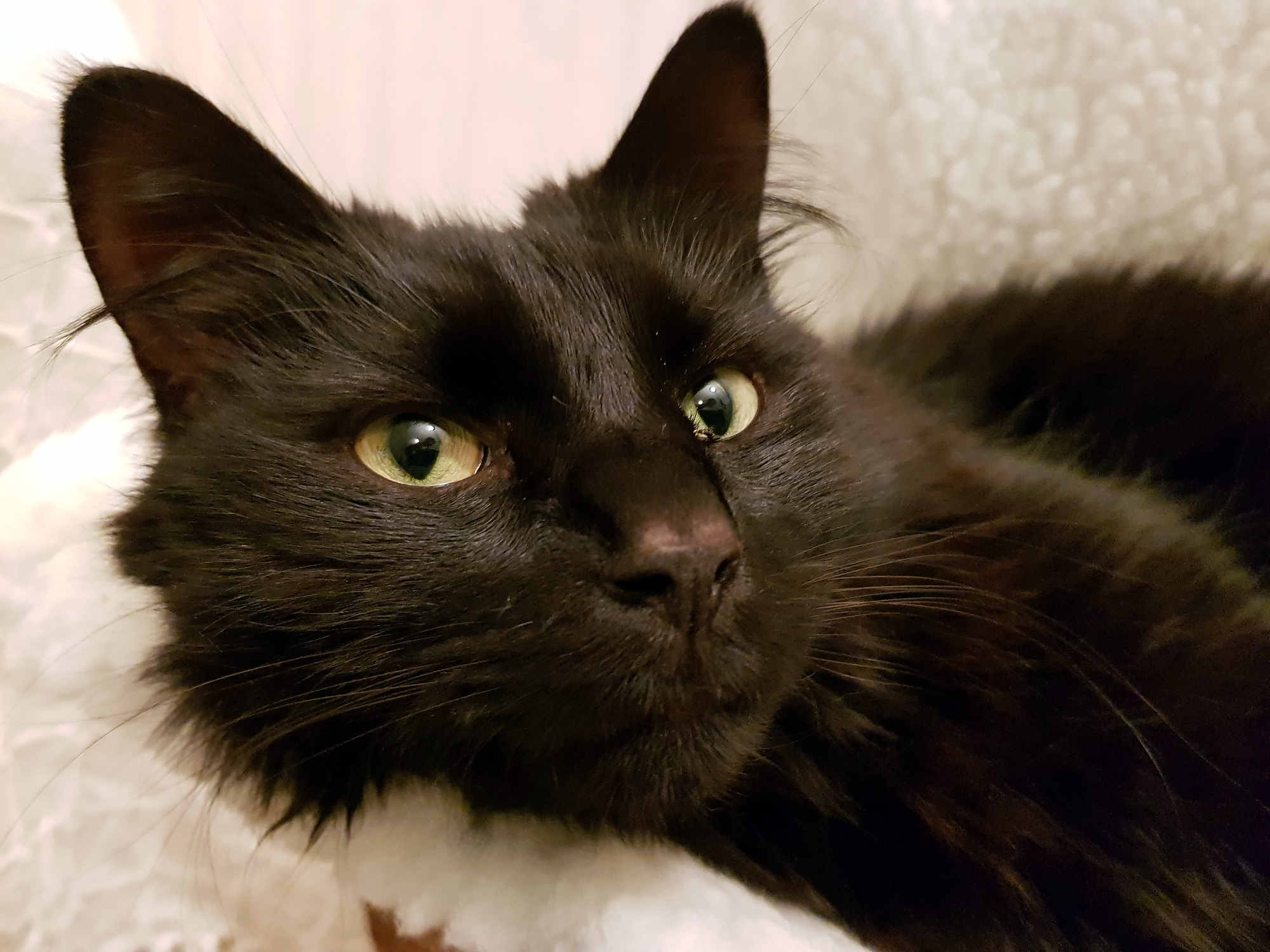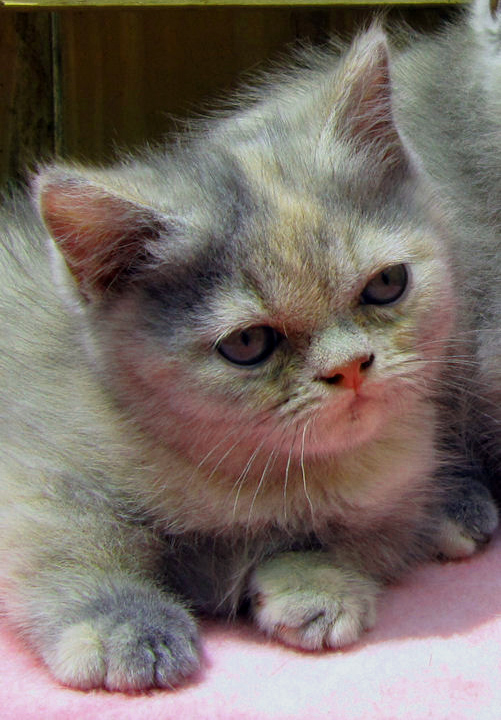The International Cat Association (TICA) classifies the Napoleon Cat as a domestic hybrid breed, “A breed developed from a deliberate cross between two existing domestic breeds, incorporating characteristics of both parental breeds into the new breed.”
The two breeds (or Groups) from which the Napoleon is derived are the Munchkin breed and the Persian breed type. Napoleons can be both long-haired or short-haired.
The breed was created by Joseph B. Smith, a Basset Hound breeder (a stubby breed of dog)and AKC judge, inspired by the Wall Street Journal’s front page feature of the Munchkin on June 12, 1995. In 1996, Joe (of the Blueline cattery) started breeding Persians with Munchkins. He wanted to create a breed that would have wide appeal, whether the cat had the signature short legs or the longer legs of the non-standard version.
Joe decided to call his breed the Napoleon after the short-statured Napoleon Bonaparte. The Persians used were the so-called doll faced Persians which had a longer nose than the modern Persian and a very open sweet expression. He chose the Persian breed group as an outcross to the Munchkin for reasons of both beauty and bone structure.
From the Munchkin group, the Napoleon has inherited its distinctively short legs. The short legs of the Munchkin occurred as a spontaneous mutation in the general cat population and have been in common existence for many years. The short legs do not hinder the cat in any way; they run, jump, and play just like any cat. From its Persian group (including Persians, Exotic Shorthairs and Himalayans) the Napoleon has inherited its lovely round face, eyes, and dense coat. Also from the Persian group, the Napoleon has also acquired its substantial boning. This boning is necessary to provide a good support system for its uniquely short legs. It must be emphasised however that the Napoleon is not merely a short-legged Persian nor a hairy Munchkin. It is a unique combination of these two groups, making it easily distinguishable from any other breed of cat.


